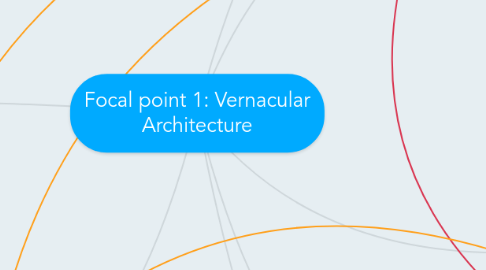Focal point 1: Vernacular Architecture
by Zengming LI

1. Urban Vernacular
1.1. Cities are created by human's imagination, shaped by human's activities, they are convergence points of human culture.
1.2. Comparing to all those factors shaping rural vernacular -- climate conditions, protection needed, cities are differentiated from the culture it maintain.
1.3. So my hypothesis that the solidity of vernacular architecture form of specific place is negative correlate with the density of cultural layer. In another word, the more cultural layer that a specific place containing, the more diversified form of architecture can be considered as vernacular.
1.4. While cities are considered as vernacular killers, but I do think they also give birth to new vernacular (if we do think vernacular is a dynamic process which unnecessarily is and not limited in, traditional form). So actually cities have a higher opportunity to become the positive preserver (or inventors) of vernacular architecture.
2. Rural Vernacular
2.1. Comparing to the vernacular form dominated by multiple cultures in urban area which seems more diversified because of the diversified cultural layers, the rural vernacular is seems more single-culture dominated.
2.2. Based on the dynamic definition of vernacular, we can say, the rural area, although successfully preserved the traditional architecture but unable or unwilling to create a new vernacular architecture. So can we identify them as tradition protectors but also as vernacular negative-preserver.
3. Future of Asian Vernacular Architecture
3.1. If I define 'modernization process (in term of architecture)' as a process of giving birth to a expedient architectural form that organically balancing the tradition and what we requiring for future (from the westerner-style-dominating 'modern architecture' we can feel those debates, dialogues and traditions that current modern architecture based on), then I think that the modernization process is endlessly updating itself, and that future of Asian vernacular architecture is just simply embedded in those architecture themselves, and that the true conservation of Asian vernacular architecture is seeking for our own Asian modernization path.
3.2. There actually no vernacular building before the 'invention' of modern architecture (I wouldn't articulate this process as invention it is more close to a evolution process), just like there the no such categories of developing country and developed country before a meeting hold in last century and have discuss out what is 'development'. Our world is tagged , artificially categorized and defined by small proportion of people.
3.3. Modernization as a process could be diversified from place to place, rather than following the currently defined 'modernization' path. Currently there actually are several talented architect I think can be identified as horsewagens of Chinese architecture modernization, such as MAD, Wang Shu. But it's yet to say it have completed its own modernization process.
4. People, Culture, and the Vernacular
4.1. Culture is shaping the vernacular form, and culture is created by people involved. And culture can be dominated by doxa, and one culture can be dominated by another stronger one. And following this clue, vernacular architectural form, which so much intertwined with culture, can be somehow dominating and dominated.
4.2. Specific culture is formed in specific environmental setting, I mean if we assume that human born with no culture and no bias but only as homo sapiens.
5. What is Vernacular Architecture
5.1. I agree with the definition of vernacular architecture that said, vernacular architecture is the form of architecture is the form that most likely to be built in specific circumstance. Then, the 'circumstance' become the variable that shaping the impression and status quo of vernacular-ness.
6. Understanding Foundation: Vernacular architecture is the form of architecture is the form that most likely to be built under specific circumstance. But, what are those circumstances?
7. Vernacular and Climate
7.1. Climate condition shaping vernacular form deeply. Yes because the form mostly likely to be built under severe climate condition is quite different from those in warmer district.
8. Materials, Construction and Vernacular
8.1. Material chosen, construction method adopted are very much influenced by culture, climate condition and material available.
9. Vernacular Landscape
9.1. From a MLA candidate's view the vernacular landscape here is quite different from the definition of 'landscape' we used in professional field. Here I would like to understand the term 'landscape' as a synthesis of built environment that integrating architecture ,landscape, culture, by which make the scenarios on-going.
10. Vernacular-ness is dynamic concept that differs from people-to-people, place-to-place. So actually not only the vernacular architecture built have place-to-place different, the perception of vernacular architecture is also different from people to people.
11. IS IT VERNACULAR? IS IT TRADTIONAL?


